What Sold Globally in 2019: Power Shoulder Jackets, Petite Bags, and Bottega Veneta’s Major Moment
What sold globally in 2019 provided a surprising amount of consensus, given the geographical sweep of the department stores that were asked: Saks Fifth Avenue in the U.S., Selfridges in the U.K., TSUM in Russia, David Jones in Australia, Lane Crawford in Asia, and Galeries Lafayette in France. What they all agreed on: We might think that it’s 2019 A.D., as in anno Domini, but in reality it’s really 2019 B.V., as in Bottega Veneta; every retailer cited Daniel Lee’s debut as a barnstorming start, with a mania for his square-toe pumps, puffed-up mules, and the omnipresent (and constantly sold-out) pouch purse. Many took it as an indication of not only the strong and confident new vision Lee brought to the house, but the increasing light speed at which fashion is moving.
Otherwise, here is what else sold globally in 2019: The jacket, with definitive shoulders, came back in a big way; tiny bags barely bigger than your phone, in fact oftentimes smaller, were being carried (no one did it better than Lizzo); and sneakers were worn and won’t ever, ever die—they just get snazzy, luxe upgrades. As to what’s on the slide: hard-core streetwear and body-conscious dressing of any sort. Logos, while not gone, were repositioned quite literally, appearing as allover prints or discreet monograms.
Lastly, speaking of repositioning: The reason for speaking to (primarily) brick-and-mortar retailers came from a desire to check in with them as they undergo cataclysmic change. (Who would have thought we’d be looking at the sad sight of Barneys New York all but disappearing, losing an iconic store, an industry leader, and a major employer; here’s hoping the staff move onto new roles, and soon.) That said, as you will read, several of the stores are challenging themselves as to how they can change, as the circular economy grows, sustainability is (rightly) more and more on our minds, and we’re all asking: How much do we really need to buy?
SEBASTIAN MANES, EXECUTIVE BUYING AND MERCHANDISING DIRECTOR, SELFRIDGES, U.K.
Which trends, items, and pieces have your customers bought into this past year?
I think one of the changes, something that is getting stronger, is the empowering of women; there has been a lot of tailoring, blazers, casual in checks, and more formal, single-breasted or double-breasted. That has been a big trend. I don’t think that’s going away for 2020. Separates have been strong. Dresses were strong; we did a collaboration with Reformation, and dresses have been so important to that brand. The biggest hit was the easy summer dress, with flat shoes or sneakers, but also the proper, long statement evening dress. We are still selling evening: from Valentino, for sure, but also from Rick Owens; Miuccia Prada is doing a great job on that front as well. That dress hasn’t been about a specific trend or print; it’s something that is bought to last. Accessories have gone in an interesting way: hair accessories, from clips to headbands, branded or unbranded, bejeweled or not. And then I guess what you could call the Instagrammable pieces, things that make a statement, changing the look and the silhouette. There has been a real affirmation of micro bags. Jacquemus started it early in the year, and since then they have turned up everywhere, from Louis Vuitton to Prada. And trainers: They simply don’t stop.
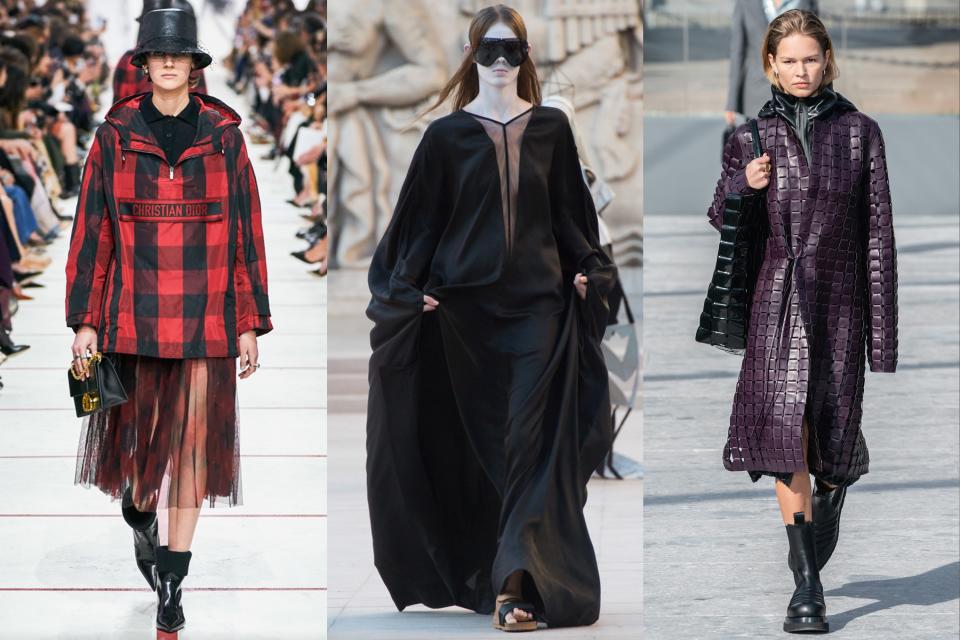
Which brands and designers continue to appeal? And did anyone new come through for you in a big way this year?
Maria Grazia Chiuri and Kim Jones are simply doing beautiful jobs at Dior. Bottega Veneta—it got four awards [at the British Fashion Awards]; Daniel Lee has done the unthinkable in the space of one season. And we were trying to do a lot of collaborations. We did a very interesting one with Prada in September, where it created a declination of what it showed in February, incorporating the yellow of the Selfridges logo. We’ve been doing more things like that: a collaboration with Daniel Arsham and A-Cold-Wall and Ambush, specific capsules that are exclusive to us. We are trying to shift our business, going more into product development. And we give them specific displays that are Instagram moments. We are shifting our retail model into something way more dynamic. We did our first Instagram pop-up edit, with brands that started on IG and that were only going to be available to buy in-store at Selfridges. Everything is blurring: music, film, art, and fashion. Kim [Jones] is a good example of that, the way he collaborates with everyone.
What changes are you seeing in the way people are shopping—more special pieces, more/less branded/logoed pieces, more/less casual, et cetera?
I think the biggest revolution we are starting to see is consumption that will come through the circular economy, sharing or hiring, or clothes that last for much longer. We are very conscious of that. I have been saying that the past 10 years was the digital revolution, how that changed fashion stores, and the next 10 years will be the consumption revolution. Those are big things to go through—and the second one is going to be much harder to crack.
Interestingly, we did two trials with Vestiaire Collective, one in women’s, one in men’s, and [the] women’s was very successful. We opened a Vestiaire Collective store in October, the first in the world. And we did something with Depop over the summer, a three-month pop-up shop. We currently have four different Depop vendors.
There has been such a strong reaction to sustainability. More and more people are interested in it, especially in London, given the support for Extinction Rebellion—it’s very strong in this country. My team and I are thinking about [environmental challenges] every single day, as opposed to just waiting till [they] arrive.
Which local designers have had real traction for you?
I think there are some good ones bubbling through. 16Arlington, they’re a great power couple. We have had much success with Daniel Pollitt. Martine Rose is fabulous. Christopher Kane, that creativity is there, and he is really coming back. There is definitely a movement in a different direction from where London was.
What do you feel is losing favor with your customers?
Body-con dressing is definitely fading away. I think that prints, they have been to a certain extent slower; I don’t see them coming back anytime soon. Logos are still doing well; when the High Street is doing so much so well, they are a way to differentiate and recognize a garment.
And what has been the biggest surprise, fashionwise, for you this year?
Bottega Veneta, which went super fast. It reminded me of when Gucci took off with Alessandro Michele; it started immediately. It’s showing the same trajectory. And I feel very good about Prada; the kids are wearing the nylon bags from the ’90s. [With] Re-Nylon, that was the biggest statement a luxury brand has made about sustainability. Rihanna with LVMH—that was also a surprise, and the positioning of it.
RICCARDO TORTATO, FASHION DIRECTOR FOR TSUM.RU, RUSSIA
Which trends, items, and pieces have your customers bought into this past year?
First of all, we noticed that tailoring was no longer an exclusive topic for men; we saw a demand for amazing tailoring, [such as] jackets with important shoulders from Alexander McQueen and the Celine culottes; those were must-haves for the season. Of course, the coats from Daniel Lee at Bottega Veneta did exceptionally well. The clients loved them. And the other big thing was the neon part of Saint Laurent; we even had some of those really amazing show pieces, like the dress with the big, big bow as well as the neon accessories. We have had an incredible season with Saint Laurent, the accessories for sure, but also the ready-to-wear. Balenciaga, with the color-blocking, that was really strong.
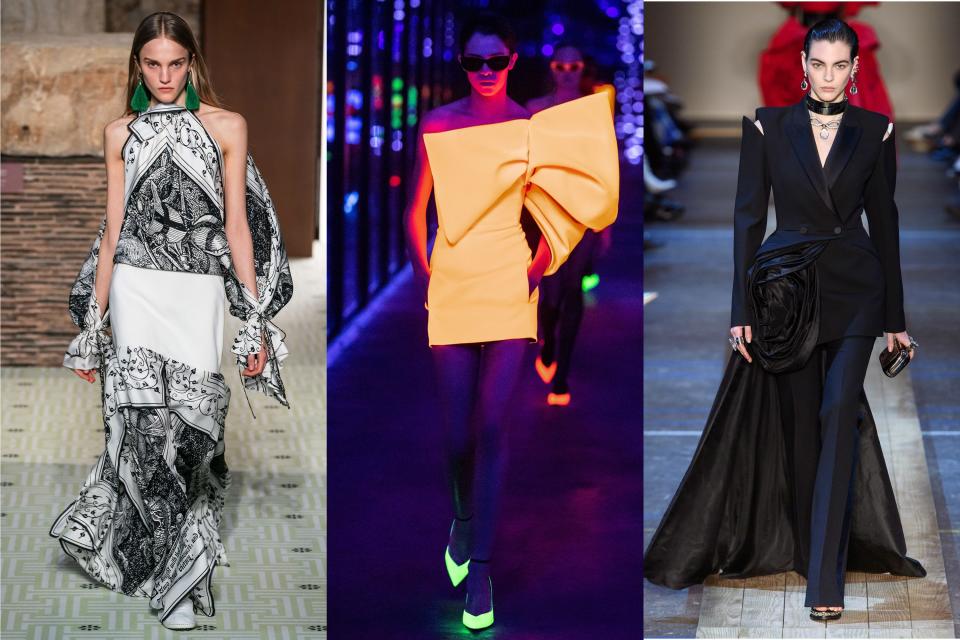
Which brands and designers continue to appeal? And did anyone new come through for you in a big way this year?
For sure it was a strong and sure start to a new chapter for Bottega Veneta. Also Lanvin, with Bruno [Sialelli]. Valentino is still a phenomenal brand, mixing modernity with a real couture feeling. Loro Piana for more casual luxury. And Saint Laurent and Balenciaga did very well. They create full wardrobes for our clients. Russia is very different today, especially Moscow; people are interested in new trends, they move very fast, and they are obsessed with quality.
What changes are you seeing in the way people are shopping—more special pieces, more/less branded/logoed pieces, more/less casual, et cetera?
What I personally noticed was how clients were more and more mixing brands to create a unique look. We are able to offer exclusive pieces, and our clients love that, but they also want to know what the most desirable items are. I’ll give you an example: They’ll take Bottega shoes, but wear them with Loro Piana and a Saint Laurent bag. For sure there is still logomania, but it’s not like it was before: Now it’s just a monogram or it’s an allover print, so it’s more abstract. What has been really interesting, and this has been entirely driven by customer demand, is the casual luxury trend, something like Brunello Cucinelli, a super-quality product with a casual look; it’s working really well. We have customers who love Off-White, Givenchy, and Balenciaga, but they are mixing them with Valentino, Bottega, Loro Piana.
Which local designers have had real traction for you?
Vika Gazinskaya and Walk of Shame; we give them the space to develop, and we are proud to be the first to endorse them.
What do you feel is losing favor with your customer?
Sneakers are still important, but the pure streetwear look has gone over to a more casual, luxurious style; sneakers and tees are transitioning into special and high-end versions. I don’t think that’s unique to us; I think that’s true everywhere in the world. The oversize look is still around, but it’s now more about comfort than excessive volume.
And what has been the biggest surprise, fashionwise, for you this year?
Well, of course, what was surprising is how fast clients endorsed Bottega Veneta. That for sure surprised me. The success itself didn’t surprise me, as we always had a strong business with the brand, but the speed. We were closely watching [Bottega] and saw that our customers really jumped in.
NELSON MUI, MERCHANDISING DIRECTOR—FASHION, LANE CRAWFORD, ASIA
Which trends, items, and pieces have your customers bought into this past year?
By far the biggest trend that resonated most was tailoring, from cinched and tied at the waist (or belted) to colorful suiting and oversize—our customers sometimes wear them [jackets] as minidresses. High-waist pants, the suit jacket paired with shorts or a camisole all performed incredibly well.
Leather separates (shirts, shorts, and skirts) were a must-have, in light, supple leather or vegan leather; we feel strong about the upcoming colored leather options for [next] spring.
We’re seeing the new volumes slowly being embraced—given the average Asian height, our customers tend to go less for full dresses, but in tops with puff shoulders or oversize shapes, toned down with denim, simple trousers, or a skirt.
The Bermuda short was huge! For fall, so were culottes. And while we didn’t go big on items like the biker short, it worked as a novelty item. Frankly, any type of shorts, especially short shorts, appealed.
Which brands and designers continue to appeal? And did anyone new come through for you in a big way this year?
Our consistent top brands include The Row, Sacai, Alexander Wang, Gucci, and Thom Browne. Loewe is also gaining ground, and both the main collection and the Paula Ibiza pop-up were huge hits. Among the new players, Monse has been growing tremendously and our customers were thrilled to meet Laura Kim and Fernando Garcia in Chengdu and Shanghai this October at a special trunk show. Bottega Veneta, under Daniel Lee, has had an incredible reception for shoes and bags, but the ready-to-wear is also strong, particularly in China. Nanushka is another one that’s come on strong [for us].
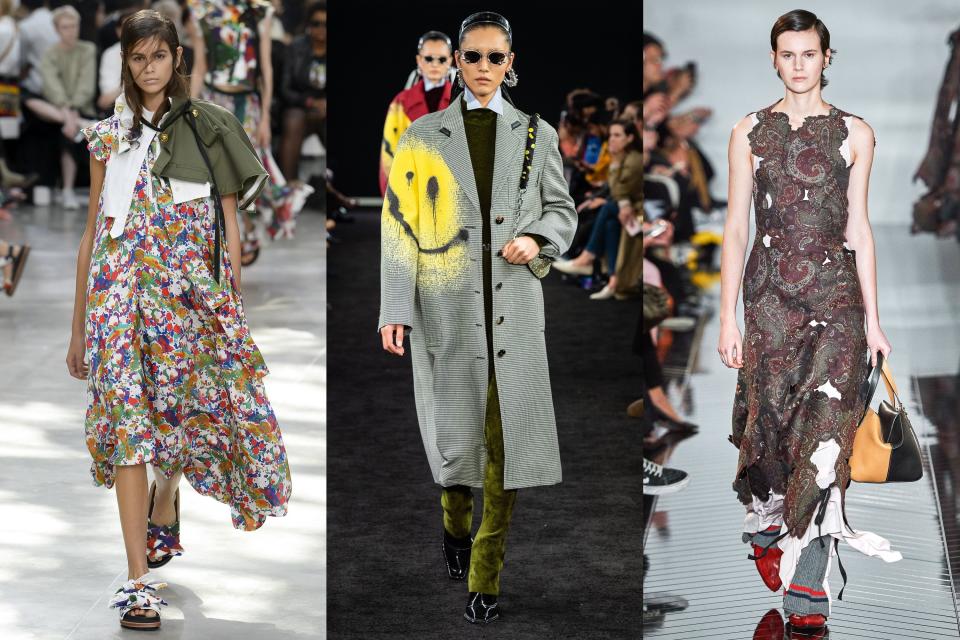
What changes are you seeing in the way people are shopping—more special pieces, more/less branded/logoed pieces, more/less casual, et cetera?
With fashion trends and brands cycling in and out so fast, we’ve seen customers starting to get back into more investment pieces. This really is partly in reaction to the move away from overly casual, sporty streetwear styles, and back more toward chic, polished, and feminine looks that can be layered on, season to season. People need a palate cleanser!
[The] logo is definitely downtrending for us, and while people aren’t giving up on sneakers just yet, it seems like just about every other girl around town is sporting the square-toe mule. [And] in Asia, where the development of ski resorts continues at a torrid pace, we’ve had a tremendous response to the curated ski pop-up we launched. People are buying Goldbergh, Fusalp, Perfect Moment, Fendi, and Bogner, but [then] also wearing them off-piste.
Which local designers have had real traction for you?
We’ve been championing Chinese designers for more than five years now, including our new recent collaboration with Shanghai collective Labelhood, and among the latest to break out is Sans Titre, a Beijing-based brand. Customers love impeccably tailored garments with subtle Asian references. I personally also love what Maya Li is doing—chic, high-volume tops that give just enough twist. I-Am-Chen’s Zhi Chen’s color-blocked knitwear is also a hit.
What do you feel is losing favor with your customer?
In general, items that are very “street” and masculine/androgynous. Athleisure as a whole, but when there [are] interesting collaborations like 3.1 Phillip Lim x Fila, et cetera, then they work better.
And what has been the biggest surprise, fashionwise, for you this year?
I was of course shocked and delighted by the improbable collab between Dries Van Noten and Christian Lacroix—brilliant! And in an even more jarring combo—Zegna and Fear of God!
TRACEY MARGOLIES, CHIEF MERCHANT, SAKS FIFTH AVENUE, USA
Which trends, items, and pieces have your customers bought into this past year?
Our customers wanted to dress up more this year but be comfortable while doing so. Glam cocktail dresses with longer hemlines were very popular, paired with a lower heel height or sneaker. Customers gravitated toward head-to-toe ensembles, especially long skirts with matching blouses, and fine jewelry and watches. Polished dressing with tailored separates, midi pleated skirts, and slim blazers also performed well. Shades of neutrals continued to be a go-to for ready-to-wear and accessories.
Which brands and designers continue to appeal? And did anyone new come through for you in a big way this year?
Brunello Cucinelli, Valentino, Prada, Max Mara, Alexander McQueen, Balmain, and Isabel Marant continue to appeal year after year. Emerging designers such as Khaite and Silvia Tcherassi also performed very well this year. Daniel Lee’s first collection for Bottega Veneta was effortlessly chic and a huge success.
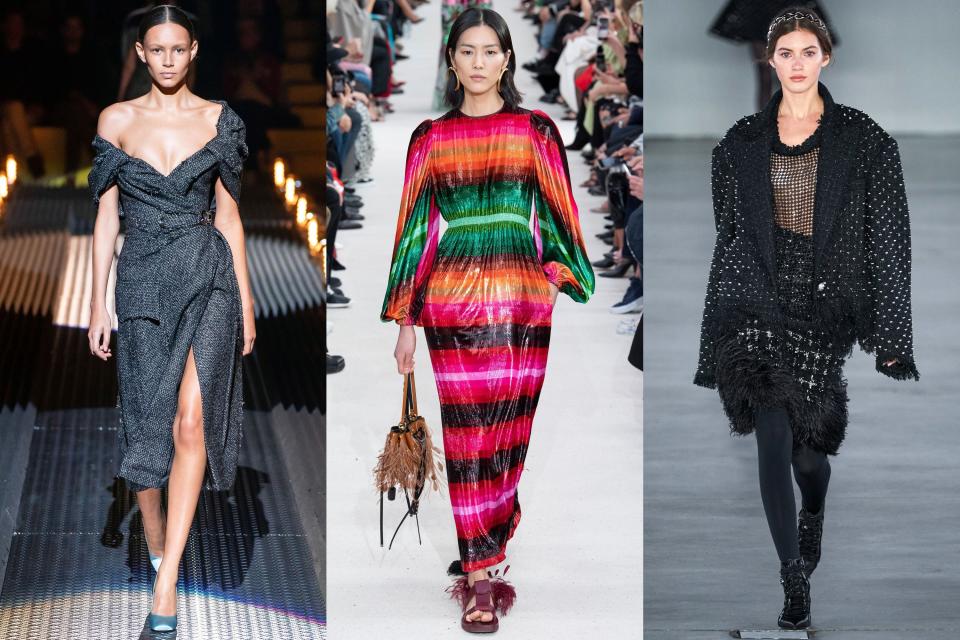
What changes are you seeing in the way people are shopping—more special pieces, more/less branded/logoed pieces, more/less casual, et cetera?
Casual looks were still important but had to be more luxe and discreet, in the form of a cashmere hoodie or pants or a ribbed knit dress. We also noticed that shoppers were looking for more elevated sportswear, particularly jackets and trousers. [The] dresses [that] sold were less embellished and printed. And overall, our customers bought fewer branded pieces.
Which local designers have had real traction for you?
Monse did extremely well; its jersey and satin asymmetrical dresses really appealed to our shoppers.
What do you feel is losing favor with your customers?
Oversize clothing, logo tees, and sport clothing are not as popular as they once were.
And what has been the biggest surprise, fashionwise, for you this year?
[That] our customers really gravitated toward faux skins—leather, python, and croc. [And] there was also a frenzy over both the Bottega Veneta pouch and stretch sandals!
BRIDGET VEALS, GENERAL MANAGER OF WOMENSWEAR, FOOTWEAR, AND ACCESSORIES, DAVID JONES, AUSTRALIA
Which trends, items, and pieces have your customers bought into this past year?
From a trend perspective, dresses with amazing sleeve details, florals, and highly detailed workmanship continue to have great success, but we are also seeing the power shoulder, the shirtdress, vegan leather, and wide-leg pants become wardrobe essentials.
Tailoring has remained strong the past few seasons, but the style still evolves and fabrications change; brands like Balenciaga and Alexander McQueen explored new takes on power suiting. Sharp shoulders, belted, and Savile Row–style tailoring make the new power suiting a trend that is key to invest in, and we are [now also] seeing it across the spring 2020 collections.
Logos and sportswear remain strong trends for the Australian market, with sneaker sales continuing to grow—however, square-toe sandals, sculptural heels, and biker boots are also increasing in popularity.
Which brands and designers continue to appeal? And did anyone new come through for you in a big way this year?
Our strongest designers that continue to appeal each season are from our Australian designer portfolio: Zimmermann, Lee Matthews, and Camilla and Marc, which are all experiencing both local and international success, alongside Aje, Bec + Bridge, and PE Nation for activewear.
In accessories our luxury brands continue to appeal, including Gucci, Dior, Saint Laurent, Celine, Balenciaga, and Valentino. The mini bag and shopper/tote have been hugely successful from our luxury brands, but our real growth has come from advanced contemporary brands such as Boyy, Yuzefi, and Danse a Lente.
This season we introduced 65 new womenswear brands from local and international designers. Of these, Toni Maticevski, MSGM, and Ganni have come through in a big way, as well as local South Australian label Acler.
Our customers are investing in quality and seeking longevity, choosing brands and styles that appeal for longer, and also with sustainability in mind.
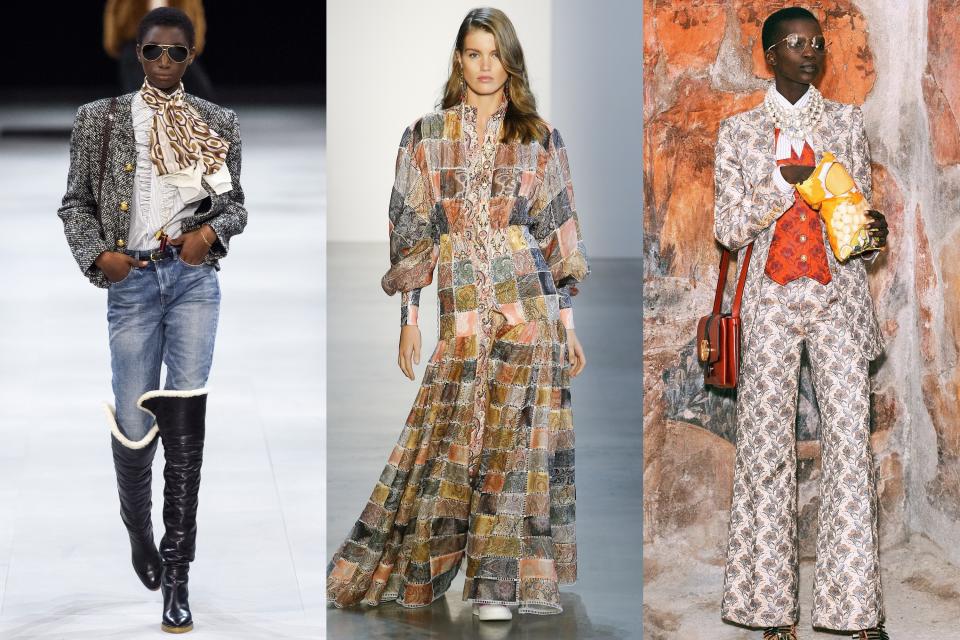
What changes are you seeing in the way people are shopping—more special pieces, more/less branded/logoed pieces, more/less casual, et cetera?
For everyday wear, our customers are buying into quality knits and tailored blazers that will last. Luxury is all about detail, the small things that make the difference between a basic piece and a good-quality piece. A great knit is the ultimate elevated basic.
The logo trend is still strong for the Australian consumer, with Balenciaga driving this trend in luxury and Aje logo T-shirts strong [from] Australian designer[s]. While the logo remains bold, the trend customer might opt for a more subtle version of the logo piece than we have seen in previous years as she adopts a more classic wardrobe.
Due to the Australian climate, both eventwear and lifestylewear are popular. Leisurewear continues to go from strength due to the laid-back lifestyle of Australia. Sneakers remain popular within this trend.
Which local designers have had real traction for you?
Bec + Bridge is a cult favorite for matching sets and easy event dresses. Aje and Camilla and Marc are popular for their lifestyle pieces. New brand Acler has proven popular for unique shapes and silhouettes in bold colors, a great brand for event dressing at an affordable price point. Due to the climate, local resortwear brands continue to have traction with customers for easy dresses and basics great for traveling, holidays, and everyday wear. Popular basics are from Bassike and Viktoria & Woods, beautiful resortwear linen is from new brand Joslin, and dresses are from Zimmermann.
What do you feel is losing favor with your customers?
Mini-length dresses and skirts are losing favor with customers, with midi- and full-length styles continuing to be popular. On-trend pieces with bold colors and “wear once” styles are less popular, as shoppers opt for a more timeless wardrobe.
And what has been the biggest surprise, fashionwise, for you this year?
[That] the classic ’70s girl from Hedi Slimane at Celine—a bow blouse with a pleated skirt and jacket—has remained the key trend with no sign of slowing. [And that] the luxury sneaker trend is still very strong.
CLARA CORNET, CREATIVE AND MERCHANDISING DIRECTOR, GALERIES LAFAYETTE CHAMPS-ÉLYSÉES, FRANCE
Which trends, items and pieces have your customers bought into this past year?
Tailoring is one of the major trends that people have been buying into, especially Balenciaga and the ever-growing shirting category, [particularly] from The Row. Animal prints have been a must-have—leopard has been at its peak, used to twist the more serious silhouettes. Also, animal-print bags and belts, in zebra and leopard. There’s been a huge trend in jewelry—statement earrings have had strong traction, and we’ve been seeing new kinds of hair accessories, which has really translated into sales, from Simone Rocha’s signature clips to those by Chanel. From the bag and shoe world, it’s not so much the bag itself, but how it’s carried: the mini bag from Jacquemus, worn like a bracelet, or pouches, which have gone from night into daytime wear, clutched under the arm, like the now iconic Bottega Veneta pouch. [As for shoes], the big wins have been kitten heels and mules; those have really won over our customers, whether it’s a contemporary brand like By Far or the always-out-of-stock Bottega Veneta mule!
Which brands and designers continue to appeal? And did anyone new come through for you in a big way this year?
In terms of the brands that keep appealing, it’s the usual suspects. Also, Attico, Sacai, and Jacquemus have, season over season, grown and grown, because they know how to reinvent themselves as well as maintain their signature core items. Of the new, I can’t not mention Daniel Lee’s Bottega Veneta, and there has been a smaller designer, Amina Muaddi, who has been shaking things up; she has a tremendous ability to interact with her clientele. And in the contemporary world, I can’t not mention my admiration for Ganni. It has turned its local label into a global brand—and it’s only getting stronger. It’s growing its community, and the sales are through the roof!
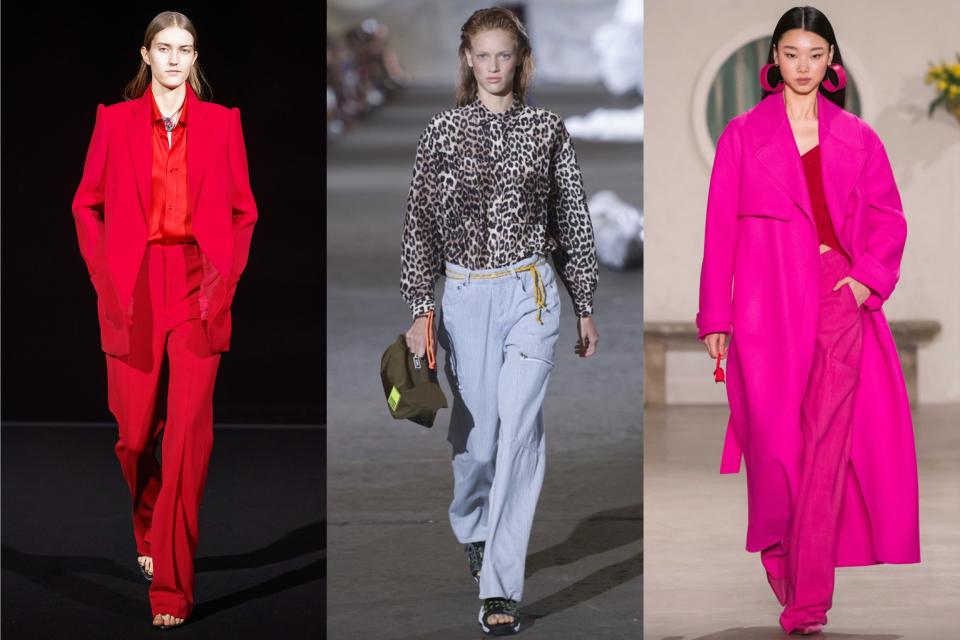
What changes are you seeing in the way people are shopping—more special pieces, more/less branded/logoed pieces, more/less casual, et cetera?
In the Champs Élysées store, particularly, it’s what I call the emotional pieces that sell first. We take a more curated approach there; it’s more like a boutique than a department store, and it’s the elevated items that are getting the most demand; there’s a return to a dressier, more sophisticated look.
Which local designers have had real traction for you?
Jacquemus and Marine Serre, of course, and someone else who is emerging: Jeanne Damas and her label, Rouje. I really want to mention this brand. We have been supporting people like Simon [Porte Jacquemus] and Marine Serre with special projects and collaborations, but we’ve also been introducing direct-to-consumer brands into a brick-and-mortar space; people are excited to see these DTC brands IRL. With Rouje, whose strength lies in Jeanne’s effortless French style, we’re seeing locals and international customers buying her wrap print dresses and cardigans.
What do you feel is losing favor with your customers?
It’s really circling back to the general move toward a tailored silhouette, so jackets and coats with drop shoulders or Perfecto jackets—they’ve had less traction. With the arrival of the power shoulder, it’s about making a bigger statement. Denim is always interesting; skinny fits have softer traction, with boyfriend fits getting stronger. Flares are taking off. Generally, it’s high-waist over low-waist, a more tailored cut for denim. It’s always a mirror of ongoing and new trends.
And what has been the biggest surprise, fashionwise, for you this year?
I would say by far, the ever-growing appetite for direct-to-consumer brands, the Insta-brands. We built the new store [on the Champs Élysées] in the era of Instagram, and [the brands that started on it] have reshaped the market. Putting them in the store offers them a new context. There’s Rouje, and in the world of shoes, About Arianne and Neous. The biggest surprise was the reaction to Réalisation Par; we had customers from all over France. There were girls with suitcases waiting for the store to open. And Gisou by Negin Mirsalehi, where we had more than 300 people in the store to hear her story. That’s a mind-blowing turnout for an Instagram-fueled project.
Originally Appeared on Vogue

